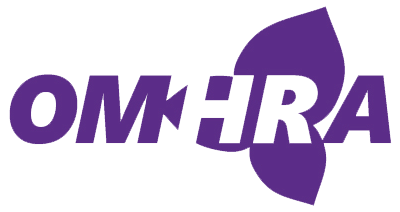
The Issue
An employee group is like a sports team. The best teams are not those with only star players, but rather those in which the people involved are committed to the team’s goals. Having talent is one thing but using it to its full potential is another.
Unfortunately, employee engagement is far from a given for most organizations. According to a 2019 Gallup survey, it was found that more than 85% of employed individuals worldwide are not engaged or are highly disengaged (Gallup, 2019). Listed below are some of the impacts of these disengaged individuals on their organizations:
- Reduced employee well-being;
- Reduced employee retention;
- Higher levels of absenteeism;
- Reduced quality of customer service;
- Etc.
The Secret Recipe
If there were a secret formula to ensure employee engagement, I guarantee you that it would no longer be a secret (and no, a manager giving away a box of Timbits occasionally as an incentive to their team isn’t the magic bullet). The real secret is that best practices leading to engagement can vary from organization to organization. It is therefore important to know your team well when implementing engagement practices.
There are two categories of motivation for an individual: intrinsic and extrinsic. The first category refers to the satisfaction of employees and the resulting satisfaction (Roussel, 1996). This motivation is innate and stable in the individual. The second category is variable and conditioned by the results.
There is a strong link between the two categories of motivation. If intrinsic motivation is lacking, extrinsic motivation may not be effective and vice versa. However, the organization can play an important role in extrinsic motivation, which can naturally influence intrinsic motivation positively or negatively. Here are some aspects that can help foster positive employee engagement:
1. Healthy and Stimulating Environment.
An engaging work environment must provide safety for the employee (both physical and psychological) as well as promote positive energy. When it comes to a physically safe environment, you already know its importance in the workplace. However, psychological safety plays an important role and entails procedures that could be trickier to ensure. Therefore, a quality manager must promote to employees that they are in a safe environment by encouraging and defending them in situations of failure.
2. Supporting Your Teams
Employees who do not receive clear direction or requests may have more concerns about making decisions. A person requesting another employee should always make their expectations clear and ensure that the person understands what they are asking for. The SMART model (Specific, Measurable, Acceptable, Realistic and Time-bound) comes to mind.
Even if the requests are very clear, they must be achievable by the assigned person. It is therefore important to check if 1) the person has undergone all necessary training to perform the task and 2) the technologies and systems in place allow the request to be carried out.
3. Employee Development
Again, according to the Gallup study, the manager’s role influences employee engagement by about 70%. This percentage may seem alarming, but I like to think of it as motivating. Therefore, a manager who listens and cares about their employees can have a significant impact on their engagement. The key to making these meetings effective is repetition. These calls have a greater impact if they are daily than if they are every week, depending on preferences.
Beyond the daily meetings, it is important to discuss with employees their career paths. I am not referring to performance evaluation meetings, but to discussing with the employee the training/coaching opportunities that would be beneficial to the employee.
4. Commitment- from a Distance!
It’s hard to talk about best practices without talking about the trend of the moment: remote working. These employees, equally talented and important to the organization, face the unique challenge of social isolation. To ensure employees’ remote work isn’t getting to them, you can apply the following practices:
- Assign tasks/projects of interest to the employees.
- Demonstrate the importance of the work done to the organization’s objectives.
- Encourage digital socializing/activities to foster chemistry within the team. This can create working relationships that can enhance the work experience for remote employees.
Conclusion
Ultimately, fostering employee engagement is a challenge that no one can escape. In my opinion, commitment is based on regularity. Consistency is key. There are many tools to implement commitment, finding, adapting, and utilizing them is the hard part. Finally, between you and me, an occasional box from Timmies isn’t the worst idea either…
Presented by

Archives
Categories
- Attraction and Recruitment
- Benefits
- Celebrating Success and Recognition
- Change Management
- Coaching and Conflict Resolution
- Culture
- Diversity, Equity and Inclusion
- Emotional Intelligence
- Employee Engagement
- Employee Performance
- Labour Disruption
- Mentoring
- OMHRA activities
- OMHRA Events
- Psychological health and safety of the HR professional
- Recruitment
- Recruitment and Retention
- Retention
- Uncategorized
- Unique ideas for recruiting in a tight job market
- Wellness
Recent Posts
- How Leadership Development Coaching Provides Better Outcomes
- Better Leadership: Focus on a Coach Approach
- Creating a Psychologically Safe Workplace
- Group Health Insurance – The Impact of Preferred Pharmacy Networks on Employees’ Mental Health
- Provide Real Support For Your Mid-Career Team’s Psychological Resilience
